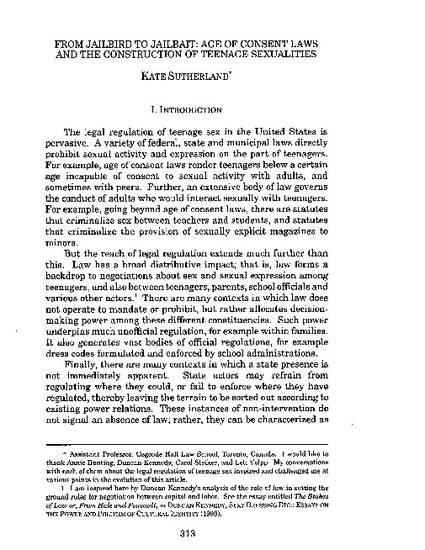
- Age of Consent,
- criminal law,
- Equality,
- Foucault,
- Legal Consciousness,
- Parents,
- power,
- Sexual Regulation,
- Social Construction,
- Teenagers
Age of consent laws provide an obvious example of direct state intervention into the sexual lives of teenagers. But the reach of this body of law extends further than this, operating in complex and contradictory ways that generate a range of distributive effects. For example, the roles that parents and welfare officials play in enforcement decisions have an impact on broader struggles between teenagers, parents, and state officials over teenage sexual activity and sexual values. Further, in those contexts where age of consent laws do not apply or where they are not enforced, teenage sex will be left in the realm of existing power relationships where factors such as age, sex, race, and class come to the forefront. Given the multiple levels upon which they operate, age of consent laws provide an excellent vehicle for exploring the role of law not simply in the repression of teenage sex, but also in the constitution of teenage sexualities.
